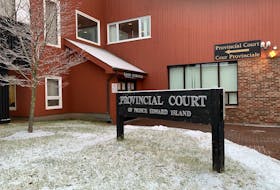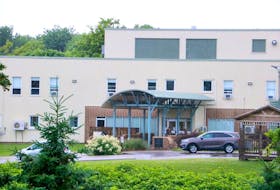
The mock crisis played out in Charlottetown Wednesday with guns popping inside a school as police officers stormed the building offer graphic illustration to a growing plan-for-the-worst mentality designed to minimize the fallout of potential tragedies such as school shootings.
The thought of three intruders at Charlottetown Rural High School shooting people down may be a chilling scenario, but the exercise was far less frightening than the prospect of a real attack happening - especially one occurring with no plan of defence in place, suggests Eastern School District superintendent Sandy MacDonald.
"People say, 'do you have to take such actions?' but if you really want to be prepared in the case of an emergency, you need to practise,'' he said.
The training exercise was a major test of the new School Action For Emergencies (SAFE) plan, a tactical emergency response to deal with dangerous incidents such as shootings and bomb threats.
MacDonald said he was pleased with the execution of the exercise, which involved some 70 police officers, Island EMS and the Charlottetown Fire Department.
Educators filled a lecture theatre in the high school to listen to blow-by-blow accounts of the operation from a police constable as the exercise played out in and around the school.
"They're all taking notes today . . . and we'll be meeting shortly to discuss what we can learn from the exercise,'' said MacDonald.
The superintendent wants each school to be as equipped as possible to carry out a lockdown - a key component in the SAFE program to keep students indoors and secure should a threat arise.
MacDonald was impressed with students' demeanor and participation in the exercise. He said the students appeared somber, but were orderly, as they were evacuated from the school and later returned to the building.
Souris Regional High School principal Seana Evans-Renaud describes the SAFE program as a sound plan.
"There has been a lot of thought put into this,'' she said. "This has been a joint effort that all agencies have been involved in . . . The fact that we are all on the same page is a huge advantage.''
Evans-Renaud is now focusing on better safe-proofing her school from an attack, such as addressing the potential problems of classrooms that have windows on the doors which could be smashed to gain access into the room.
She also plans to hold a mock lockdown drill in her school within the next month.
MacDonald said his board would look at changes that may be needed to allow for the safest possible lockdown of individual schools.
"Some of our schools are based on the open concept where there are as few walls as possible and community gathering of students,'' he said.
"Those schools, we have to do a little more work because there are a lot of open spaces. And, of course, the purpose of a lockdown is to keep students in a classroom in a contained setting for a period of time. So, yes, we have to make some changes in those schools.''
SAFE co-ordinator Const. John Flood said police were looking to test their operational readiness through Wednesday's exercise at the school.
"We were looking to test how cohesively that the different organizations will work together,'' he said.
"And basically, what I've seen so far, I'm very, very pleased with how things have taken place.''
With SAFE, police have developed full tactical and operational responses in the event of a serious incident in an Island school using an interactive computer database complete with school blueprints, aerial photos, material inventories and emergency procedures.
Still, preventing a dangerous incident in a school is preferable to reacting to one, even if the reaction is well planned and flawlessly executed.
To that end, Flood urges students, educators and the community at large to alert police of what they fear may be a pending crisis.
"If there is somebody that is displaying behaviour that you feel could have some serious long-term consequences, we're asking the community to share that with us,'' he said.
"We can intervene and hopefully prevent tragedies like these (school shootings) from occurring.''
Flood urges schools to adopt CrimeStoppers programs, which allow students to anonymously bring information to police.
MacDonald supports both the SAFE plan and the presence of CrimeStoppers in schools. He concedes, though, that there is a fine line between being prepared for a potential incident like a school shooting and fear-mongering.
"We don't want students to think that this is imminent but we want them to be able to communicate with us if they feel that there is an issue,'' he said.








